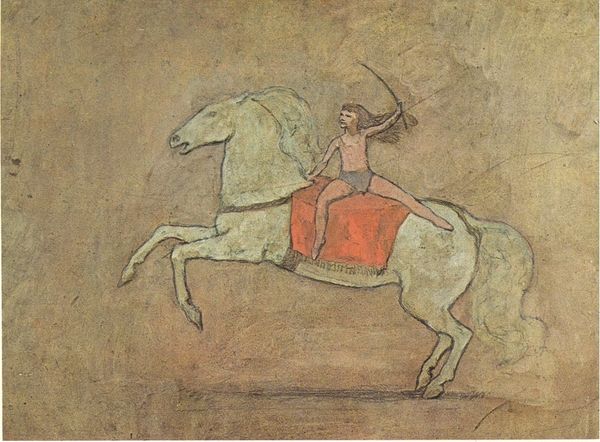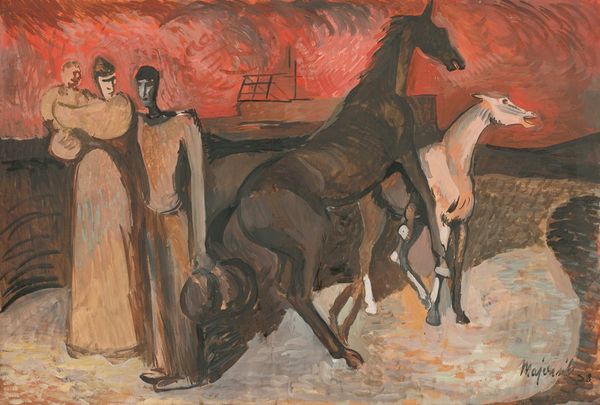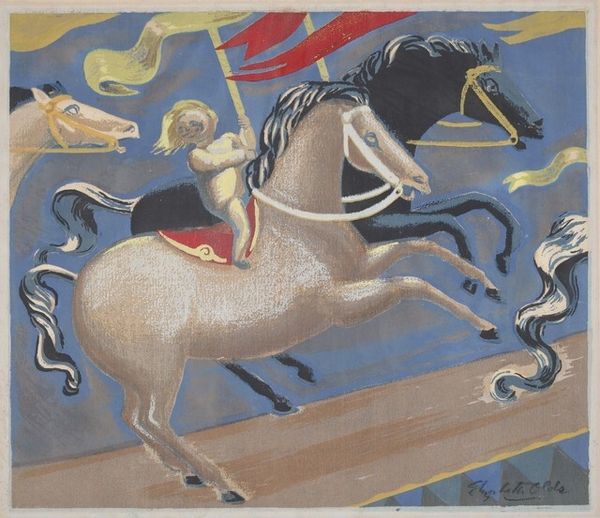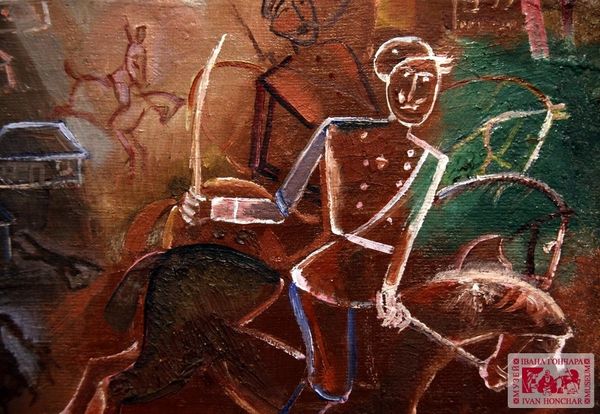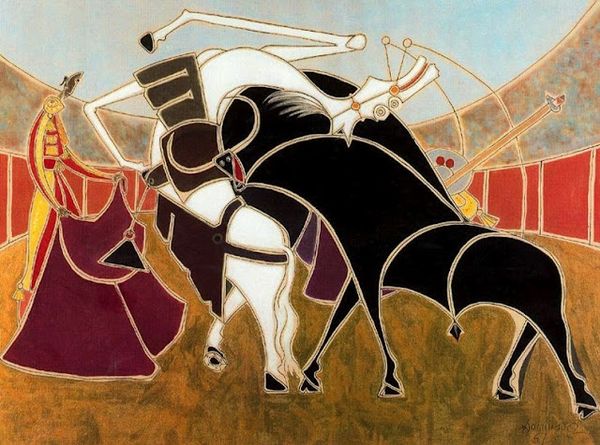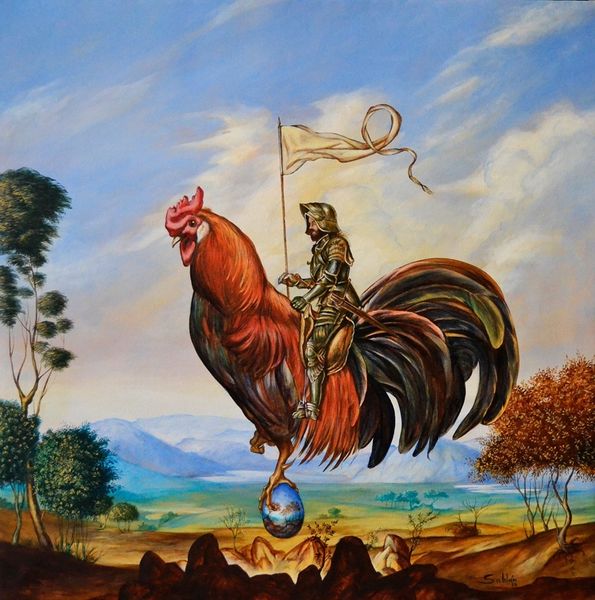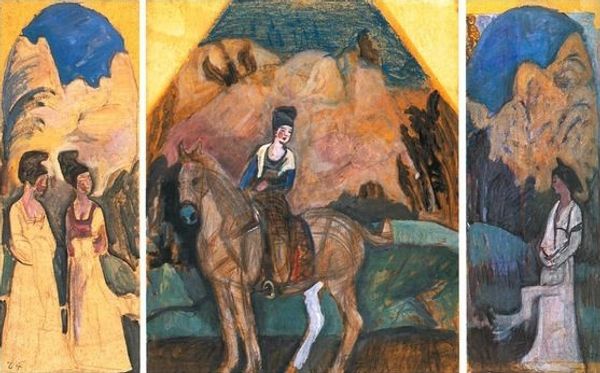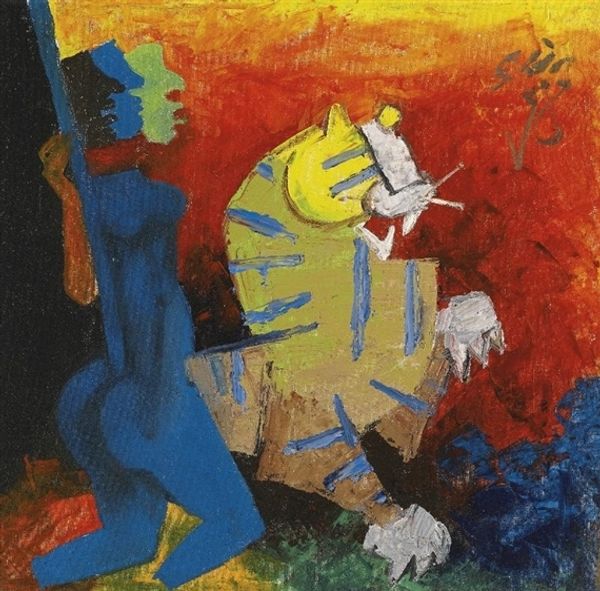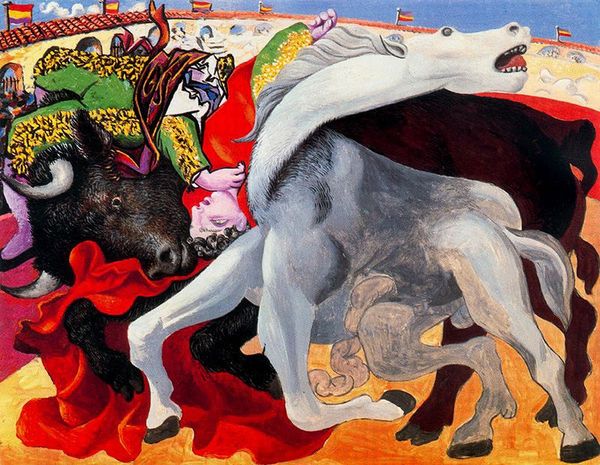
Copyright: Victor Brauner,Fair Use
Editor: Here we have Victor Brauner’s "Knight, White Horse and Snake" from 1925, oil on canvas. It feels very dreamlike and unsettling to me, particularly the stark contrast between the knight and the other figures against the ominous red sky. How do you interpret this work? Curator: Brauner's work is intensely personal, often drawing from his own experiences as a Jewish Romanian artist navigating a Europe on the brink of immense political upheaval. Considering that, what symbols stand out to you in terms of power, identity and possible threats to these? Editor: Well, the knight on horseback is an obvious symbol of power, and the snake is historically loaded with meaning… temptation, danger. Curator: Exactly. Think about how the snake subverts established hierarchies and knowledge systems. This painting might represent a personal struggle with identity, the looming threat of fascism in Europe and perhaps even internal battles against societal expectations. Editor: So you see the painting as a reflection of the historical anxieties of the time, filtered through his personal lens. Curator: Precisely! What if the "white" horse represents idealized notions of purity or power, while the "snake" challenges such concepts, acting as a reminder of darker, less visible forces at play? Consider, too, how his Jewish identity might inform this struggle between perceived ideals and harsh realities. Editor: That adds so many layers! It shifts the reading from a simple narrative to a complex interplay of identity, history, and the subversion of power. Curator: Art like this demands we question everything - from personal demons to political forces, because, in doing so, perhaps we arrive at some truths. Editor: Thanks, I’ll never look at it the same way again.
Comments
No comments
Be the first to comment and join the conversation on the ultimate creative platform.

